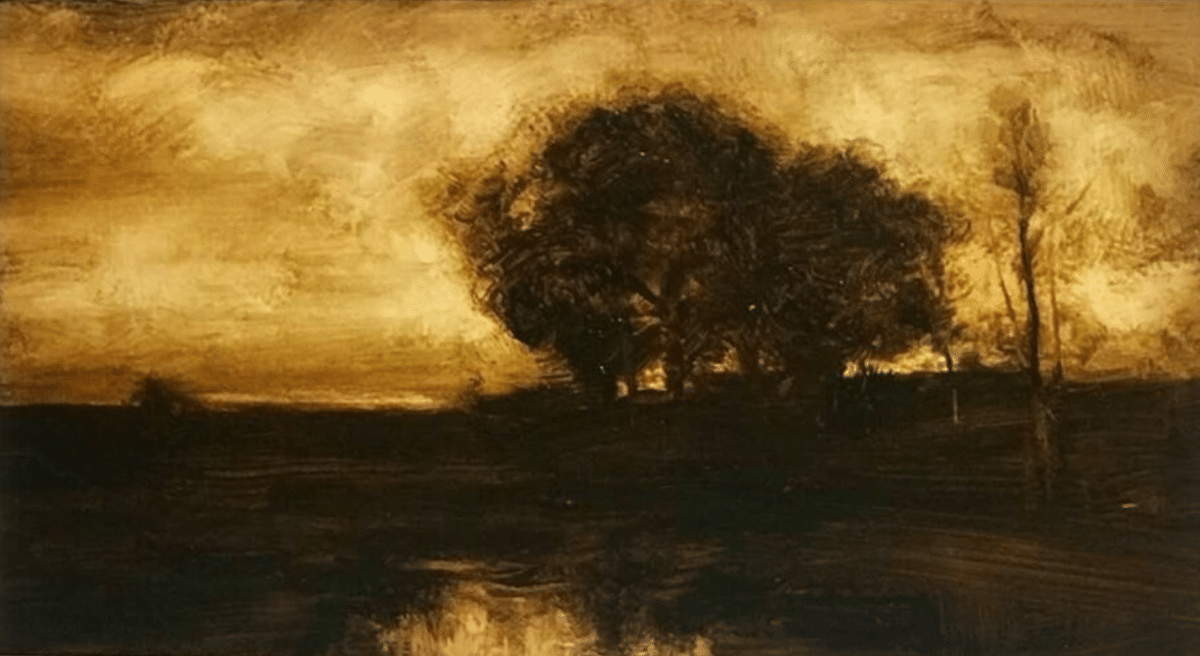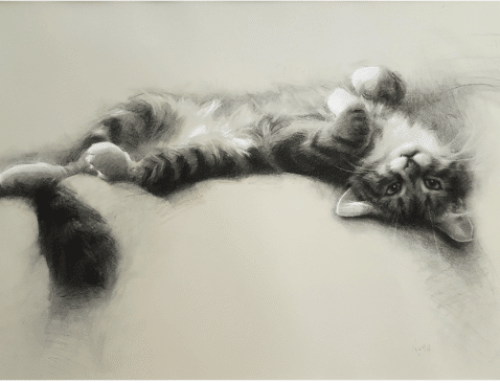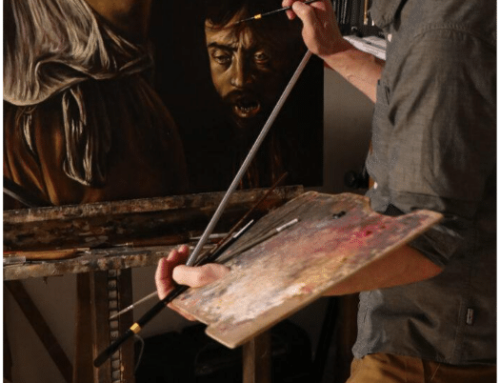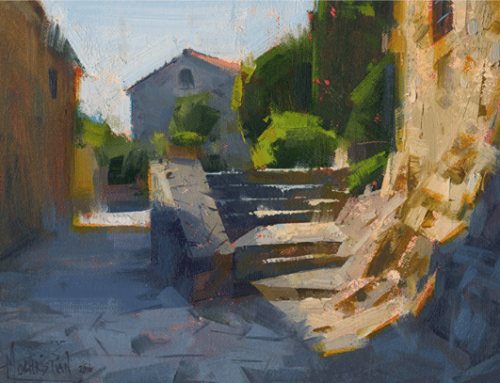Tonalism refers to an American artistic movement that originally lasted from about 1880 to 1920.
In a more general sense, the term (tonalism, tonalist, or tonalistic, with a lower case “t”) describes a style of painting (which is currently experiencing a revival today) in which color range is limited and in which subtle gradations of values (aka “tones”) do most of the work of expression.
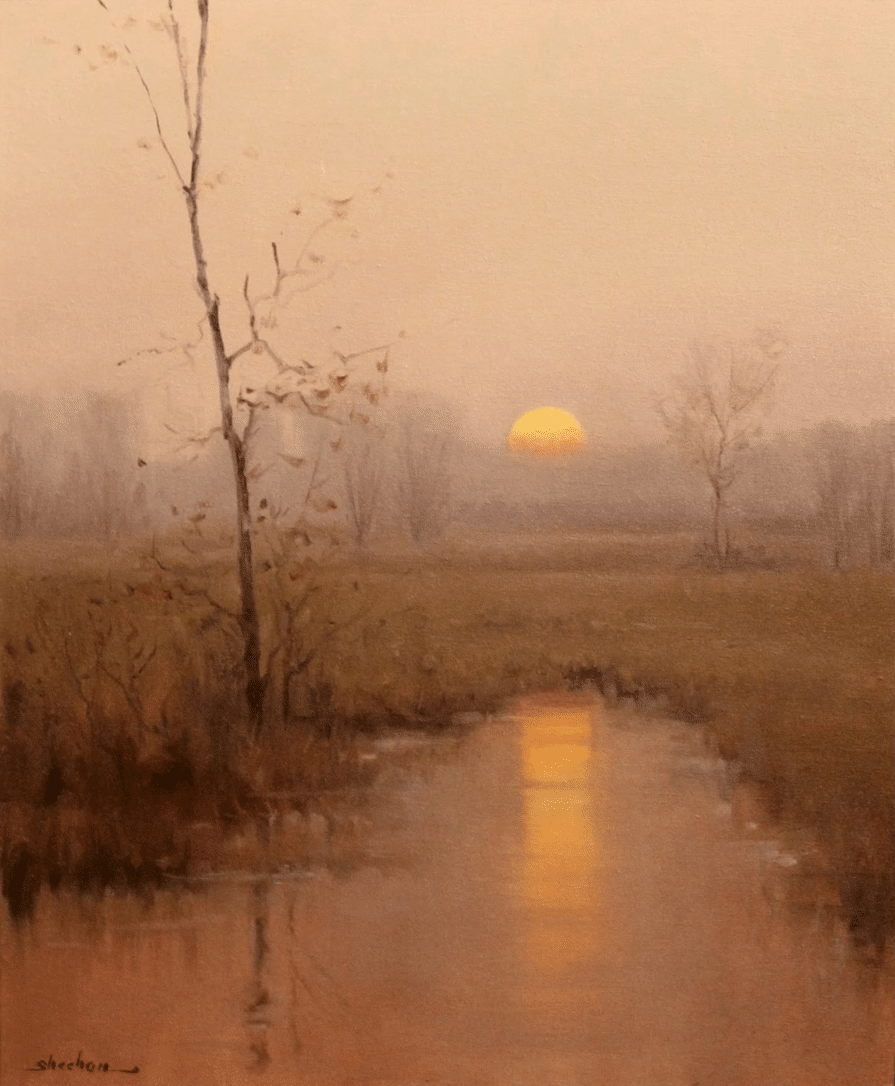
Dennis Sheehan
The Tonalism of the 1880s grew out of American painters’ appreciation for the earlier (1840s) French Barbizon style. Often called “poetic,” American Tonalism tended to emphasize mood and feeling through “color harmonies,” mystery, and suggestion. The original trend (it was only later that it acquired its name) seemed related to musical composition (c.f. George MacNeil Whistler’s “Nocturnes”) and poetry (George Inness, arguably the originator of Tonalism, included poems with his paintings, or at least he did until a befuddled critic complained).
Tonalism’s twilight mood matched that of a country disillusioned by the death toll of the Civil War and less interested in the Hudson River School’s typically blockbuster celebrations of American promise.
Contemporary tonalists, artists such as New Hampshire painter Dennis Sheehan, for example (whose paintings except for the Inness at the bottom illustrate this article), often place the importance of mood above all else, as did the historical practitioners.
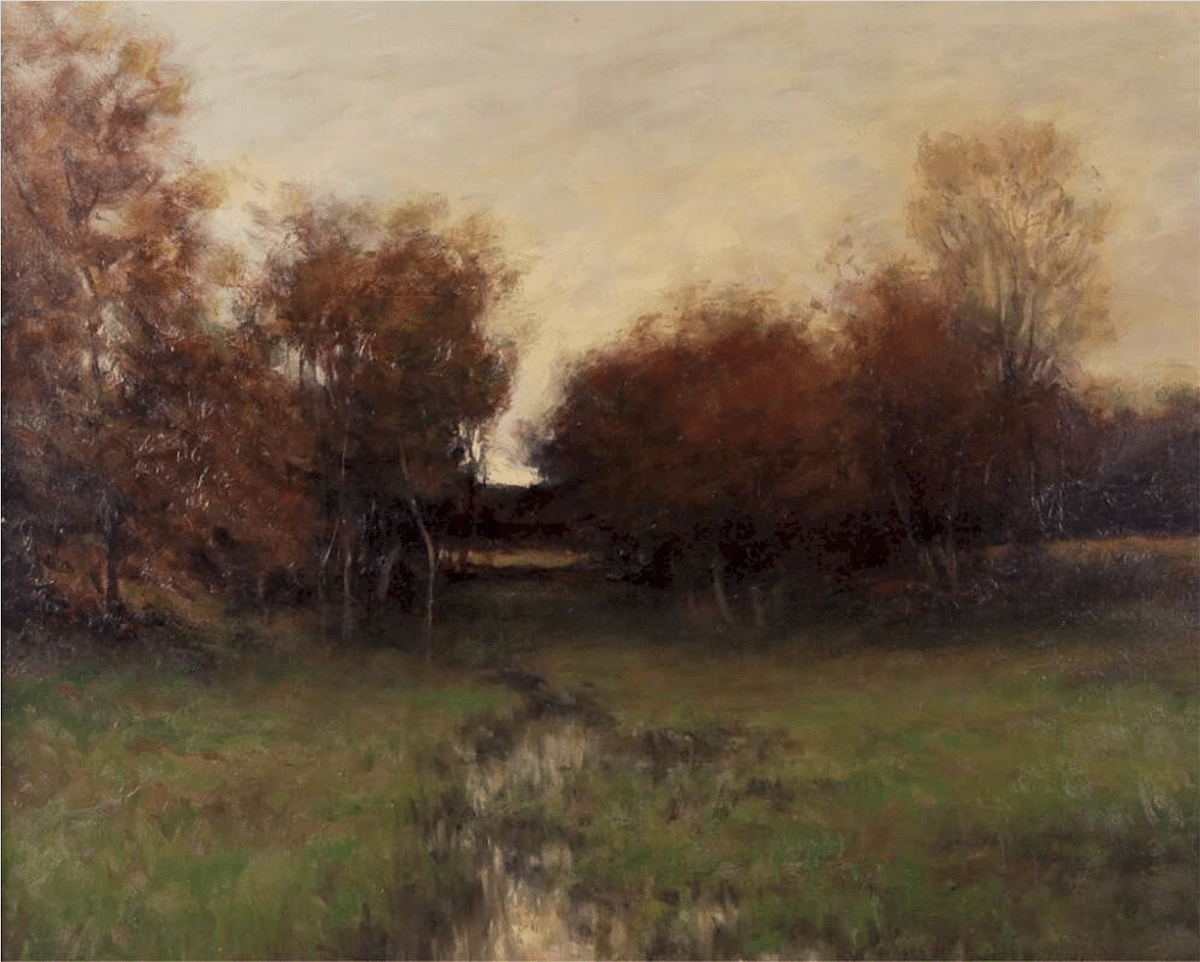
Dennis Sheehan
Tonalists tend to find that elusive quality of mood in simple scenery made not so simple by treatment that can seem at times to verge on the mystical: backlit trees, glinting pools, smoldering dawns, dusks, and evenings full of atmosphere, shadow, close color relationships and indefinite forms inspire in the viewer not just longer looking and deeper interest but genuinely heightened emotion.
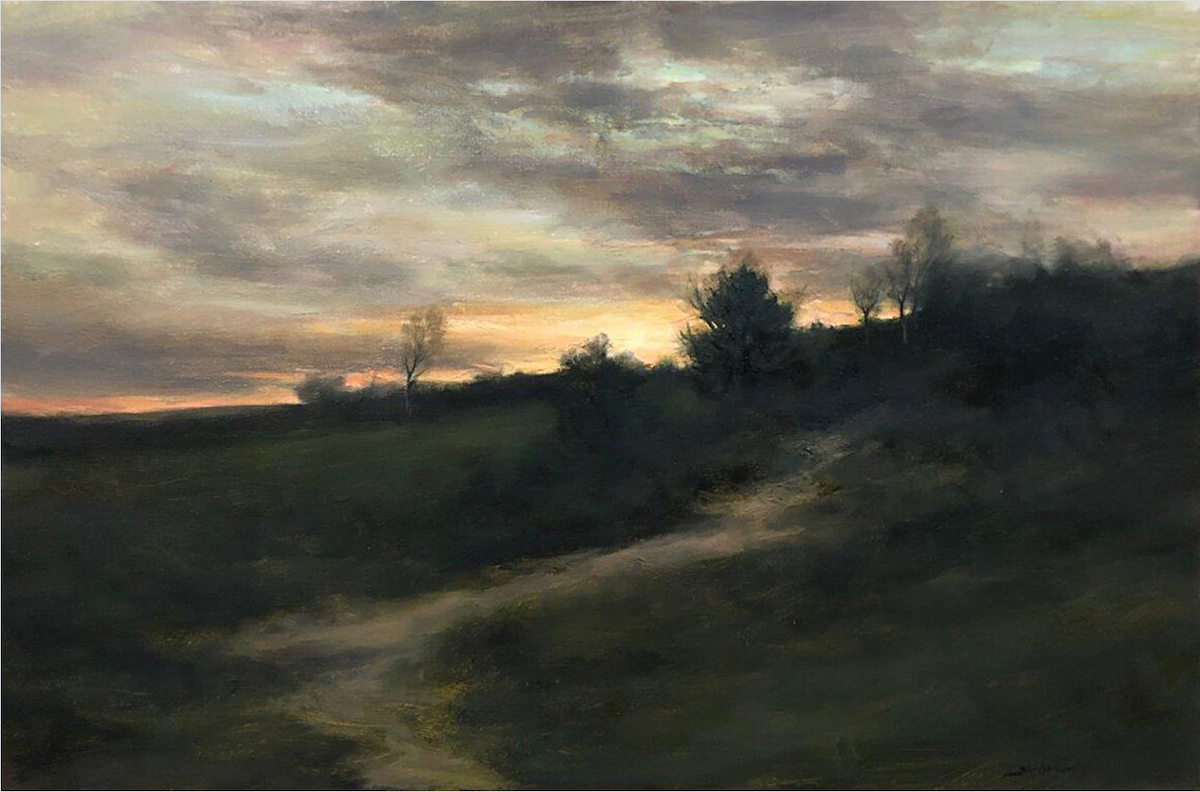
Dennis Sheehan
Such paintings remind us, perhaps, of moments of personal solitude of our own, our walking, it may be, among quiet fields and groves of trees with evening coming on. They also, it seems to me, have an effect of “dematerializing” the landscape.
Inness’ late landscapes certainly do this. Reflecting his devotion to spiritual literature, Inness’ late work can suggest the presence of a mysterious, immaterial realm into which the more concrete facts of daily life threaten, from within the flow of heightened emotional perception, to dissolve.
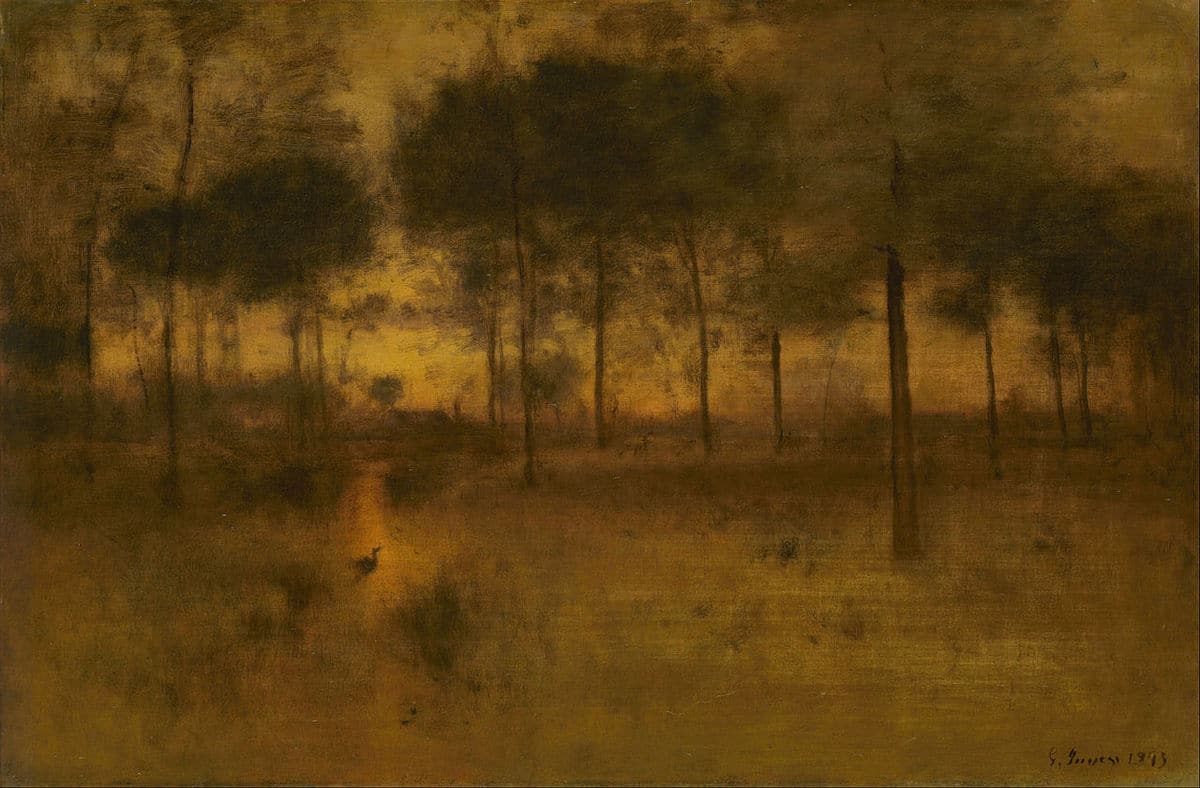
George Inness, The Home of the Heron, 1895
The website tonalism.com offers a wealth of information about tonalism, historical and contemporary alike.

Screenshot of an introductory video on the Frieze website
Frieze New York is a leading international art fair that launched in 2012. It aims to bring together the world’s leading galleries to showcase ambitious solo, group and themed presentations by pioneering artists. It’s less celebrity-studded and less hyped than Miami’s Art Basel, but it’s one of the premier art events for taking the pulse of the current and up-and-coming art-world take on “what’s hot, what’s not.”
The fair will be held next week in Manhattan (May 18 – 22, 2022). In addition to the more than 65 major galleries with a strong representation from New York, a section called Frame will also return, supporting galleries operating ten years and under to present solo presentations by “significant artists.”
As an introductory video on the site suggests, a good deal of the work looks to be wonderfully thought-provoking and even quite beautiful.
There’s an online showcase called Frieze Viewing Room that runs concurrently with the fair. It’s free but requires you to sign up with an email to use it.
In the paint,
Chris

